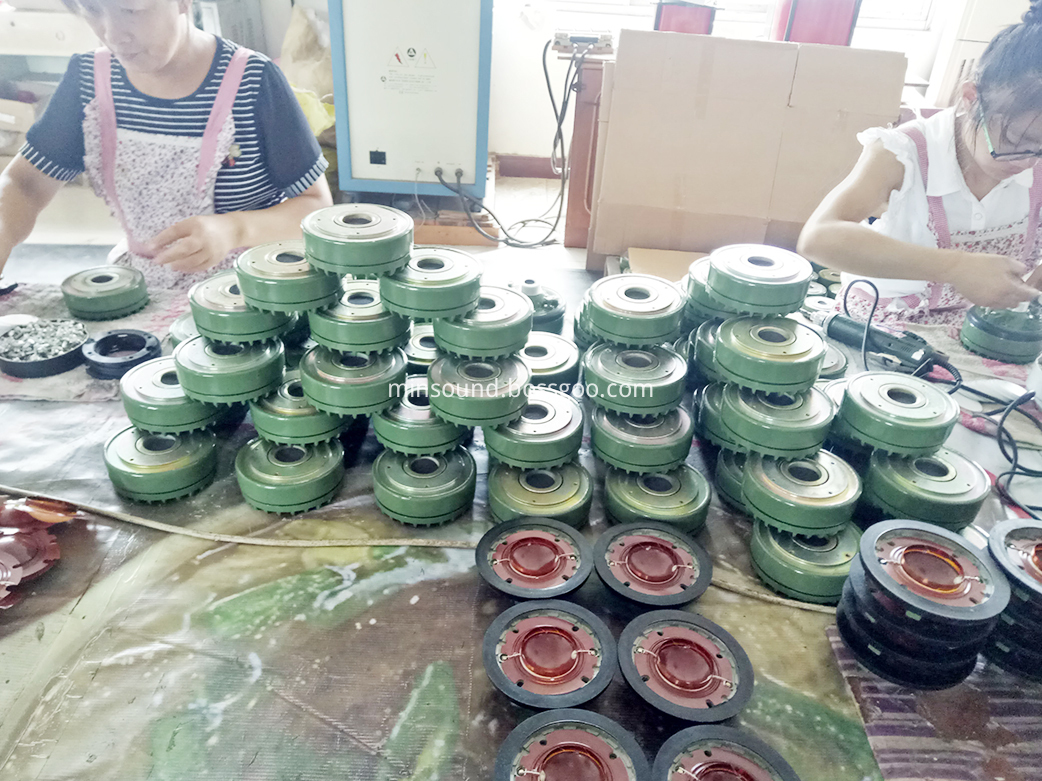Why do you like to use ferrite magnets? Because it does not rust, does not oxidize, does not corrode and is absolutely environmentally friendly. Ferrite Driver Units,Speaker Driver Unit,driver unit with ferrite magnet,Ferrite Drivers,Horn Speaker Driver Taixing Minsheng Electronic Co.,Ltd. , https://www.msloudspeaker.com
Solar Power Heater Brass Thermostatic Tempering Valve
Type Solar Water Heater Parts
Quality Control ISO9001: 2008
Manufacturer
Customized thermostatic mixing valve
Stable Mixed Water Temp.
Out Range: 35-45 C
Domestic Water Application
1. Technical Data
A. Working pressure: 0.03-1Mpa
B. Ideal working pressure: 0.1-0.5Mpa
C. Maximum working Temp.: Below 99C
D. Cold water Temp. Range: 5-29C
E. Hot water Temp. Range: 50-95C
F. Outlet Temp. Range: 35-45C
G. Adjustment Accuracy: +/- 2C
H. Flow rate on 1 bar pressure drop: 11.67L/min
I. Connection: Inlets-M, Outlet-M
Flow rate for pressure:
2. Materials of Construction
A. Valve body: Brass with Ni-plated
B. Shutter: PPO
C. Spring: Stainless steel
D. O-ring: EPDM
3. Features:
A. Fail-safe on Hot or Cold Supply Failure
B. Delivers Stable Mixed Water Temperature
C. Extended Mix Temperature Range: 35-45 C
D. Idea for Domestic Water
E. Tamper-Proof Cap
4. What is the thermostatic mixing valve?
A Thermostatic Mixing Valve is a valve that blends hot water (stored at temperatures high enough to kill bacteria) with cold water to ensure constant, safe outlet temperatures preventing scalding.
They shut-off rapidly in the event of a hot or cold supply failure to prevent scalding or thermal shock.
TMVs accurately control water temperatures for bathing, showering and hand-washing. They maintain pre-set temperatures - even if water pressure varies when other appliances are used. TMVs can be fitted under baths and basins, be part of shower fittings, or as a feature of exposed hot and cold water mixers.
5. Usage of TMVs
Point of use mixing for wash hand basins, bidets, baths and showers in hospitals, schools, sport and leisure facilities, prisons and other public buildings.
6. Installation Precaution:
A. All installations should be carried out by a Licensed Professional.
B. Install in accordance with markings on valve body. I. E. Hot water inlet-marked H, cold water inlet-marked C.
C. After temperature setting, if inlets temperature or pressure fluctuates, outlet temperature variation is within+/-2C.
D. The external check valves at inlets prevent cross-flow of hot&cold water when inlets pressure is not the same.
E. If the ratio between two inlets is too large, one flow-limiting valve should be fixed at the side of higher pressure.
F. Prior to installation, provisions should be made to flush the piping of any debris or other foreign materials to ensure proper system operation.
7. How They Work?
Upon use of tempered water, a thermostat in the mixing chamber of the valve senses the outlet temperature. The thermostat automatically positions a seat assembly which controls the flow of hot and cold water supplied to the mixing chamber. If the mixed outlet temperature increases, the thermostat will expand moving the seat assembly to allow the cold water inlet port to open more fully and at the same time restricting the hot water inlet port. Conversely, if the mixed outlet temperature decreases, the thermostat will contract moving the seat assembly to allow the hot water inlet port to open more fully and at the same time restricting the cold water inlet port. In both cases the mixed outlet water temperature is automatically and continually maintained at the preset temperature within the tolerances of the valve. In the event of a cold or hot water supply failure, the seat assembly moves to an extreme position shutting off the hot or cold inlet water port. A mechanical adjustment permits selection of the desired outlet water temperature within range of the valve
Pressure
(psi or kPa)1 psi
5 psi
(34kPa)10 psi
(69kPa)15 psi
(103kPa)20 psi
(138kPa)30 psi
(207kPa)
Flow Rate
(liters per minute)4.5
9
12.5
15.1
17.6
28.2
GPM
0.98
2.0
2.7
3.3
3.9
6.2
Why don't ferrite magnets rust?
The chemical name of ferrite magnet is iron tetroxide. The main components are: Fe3O4. It is already an oxide of iron, so it is very difficult to be oxidized again. Other magnets (the main component is iron) are made of magnetized metal iron or other elements. Like other iron and steel, they can be oxidized and rusted, and the oxidized part will lose their magnetism.
What are the advantages (advantages) of ferrite magnets
1. Low cost, low price. Raw material cost is cheap.
2. Good temperature stability. It can be used in temperatures of -40 degrees Celsius and +350 degrees Celsius.
3. It is just mentioned that it does not rust.
4. The demagnetization curve is approximately a straight line.
5. Light weight, density is (4.6-5.1) X103kg/M3
6. The anisotropy constant of the magnetic crystal is large.
7. Large coercivity Hc (between AlNiCo alloy material and rare earth cobalt permanent magnet material)
8. High resistivity.
July 20, 2023